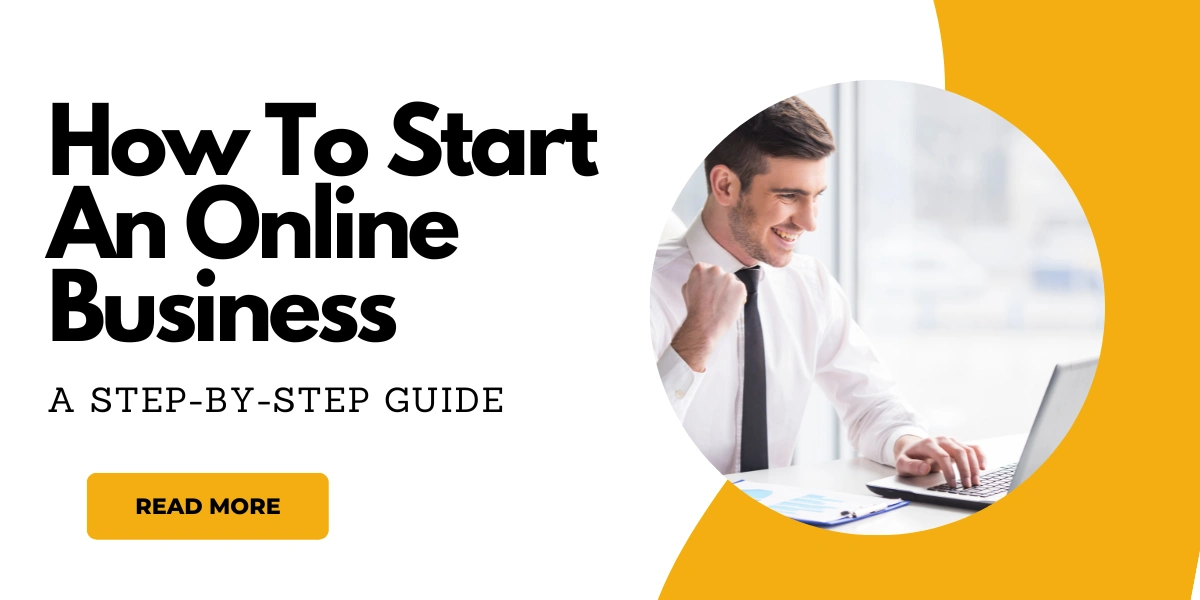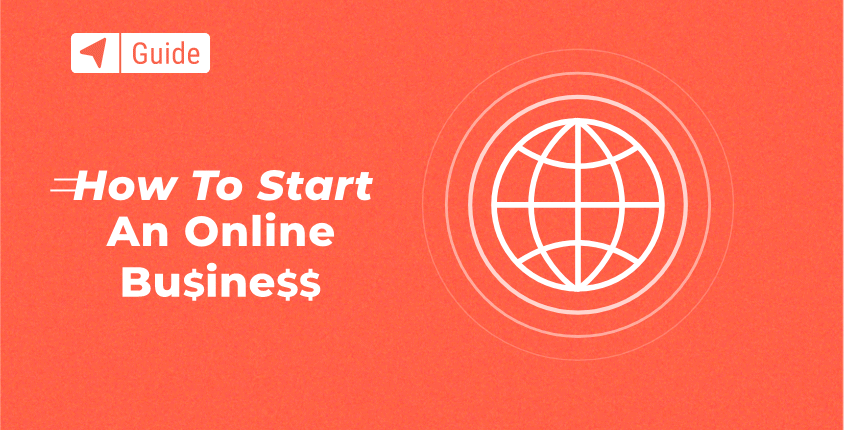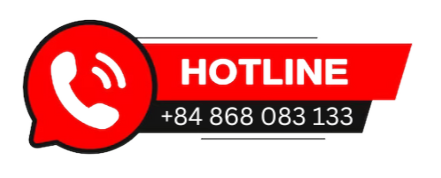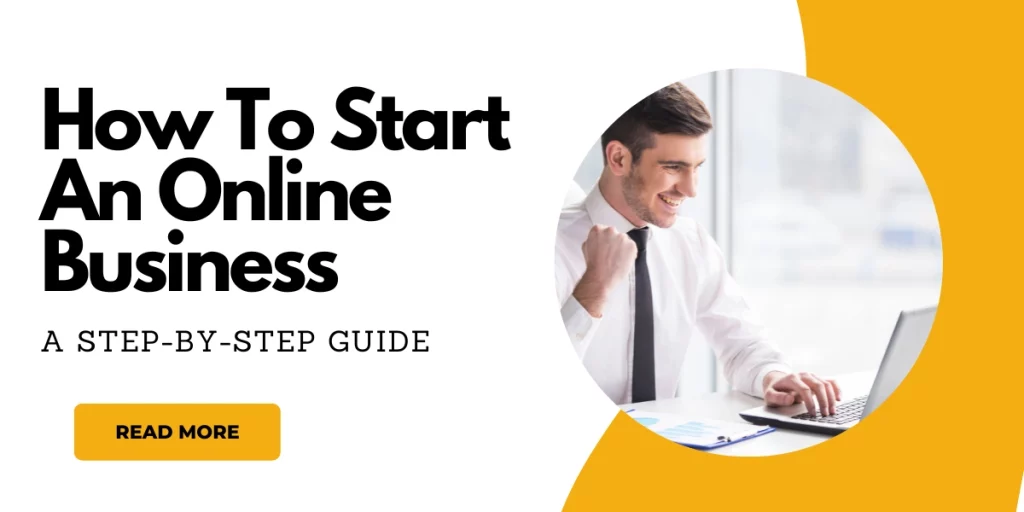Learn how to start an online business from scratch with this step-by-step guide. Perfect for beginners who want to make money online. Starting an online business is one of the most potent ways to build financial freedom and flexibility in today’s digital world. Whether you want to sell physical products, offer digital services, or run a content-based business, the Internet offers endless opportunities for entrepreneurs.
But how do you start an online business from scratch?
In this guide, we’ll walk you through the step-by-step process of how to start an online business — from choosing your niche to launching your first sale.

Why Start an Online Business?
Before we dive into the steps, let’s look at why online business is so popular:
- Low startup costs: You don’t need to rent a physical store or hire a big team.
- Flexible working hours: Run your business anytime, anywhere.
- Scalability: Reach global customers and scale quickly with the right systems.
- Passive income potential: Automate parts of your business for long-term earnings.
Step 1: Choose a Profitable Niche
The first step in starting an online business is choosing the right niche. Your niche should balance your passion, skills, and market demand.
Tips to choose the right niche:
- Identify what you enjoy doing or know well
- Research market trends and keyword demand (use tools like Google Trends or Ubersuggest)
- Look for problems you can solve
- Validate that people are willing to pay for solutions in that niche
Some examples of niches:
- Fitness & wellness
- Fashion & Accessories
- Digital products (eBooks, templates, courses)
- Home Decor
- Pets
- Tech gadgets
Step 2: Define Your Business Model
Next, you need to decide how you’ll make money. Here are some standard online business models:
- E-commerce store: Sell physical products online (dropshipping, POD, or private label)
- Digital products: Sell eBooks, courses, printables, or software
- Freelancing or services: Offer web design, writing, marketing, etc.
- Affiliate marketing: Promote other people’s products and earn commissions
- Content creator: Build an audience through blogs, YouTube, or podcasts and monetize with ads or sponsorships
Choose a model that fits your skills and interests.
Step 3: Research Your Market and Competitors
Market research is essential before launching any business. You want to understand who your target customers are and how competitors are already serving them.
What to research:
- Who is your ideal customer? (age, gender, location, interests, problems)
- What products or services are they buying?
- What are your competitors doing well?
- Where is there a gap or opportunity?
Use tools like:
- Google Search
- Amazon Best Sellers
- Facebook Groups
- Keyword research tools

Step 4: Register Your Business and Domain Name
Once you’re clear on your niche and model, it’s time to get official.
Tasks:
- Choose a business name (easy to remember, brandable, and related to your niche)
- Register a domain name (use sites like Namecheap or GoDaddy)
- Set up your legal structure (sole proprietorship, LLC, etc., depending on your country)
- Create a business email and basic branding assets (logo, brand colors)
Step 5: Build Your Online Presence
Your website is the heart of your online business. You’ll need a professional-looking site to build trust and convert visitors.
Tools to use:
- Shopify (great for e-commerce)
- WordPress + WooCommerce (flexible and powerful)
- Wix or Squarespace (easy drag-and-drop builders)
- Kajabi or Teachable (for online courses)
Make sure your website has:
- Clear homepage
- About page
- Contact information
- Product or service pages
- Blog (optional but great for SEO)
Step 6: Set Up Your Sales Channels
You may want to sell on multiple platforms, depending on your business model.
Popular channels:
- Your website
- Amazon, Etsy, or eBay (for product-based businesses)
- Fiverr, Upwork (for freelancers)
- Social media shops (Instagram Shop, Facebook Marketplace)
Having multiple channels increases your reach and revenue potential.
Step 7: Create a Marketing Plan
Now that your business is live, you must attract traffic and turn visitors into customers. A solid digital marketing plan is key.
Essential marketing strategies:
- SEO (Search Engine Optimization): Rank on Google for relevant keywords
- Email marketing: Build a subscriber list and nurture leads
- Content marketing: Create helpful blog posts, videos, or social media content
- Social media: Build a community and promote your offers
- Paid ads: Use Facebook, Google, or TikTok Ads for quick traffic and conversions
Choose 1–2 strategies to focus on at first, and expand as you grow.
Step 8: Launch and Optimize
Don’t wait for everything to be perfect. Launch your business with a Minimum Viable Product (MVP) and start testing.
What to track:
- Website traffic (Google Analytics)
- Conversion rates
- Customer feedback
- Sales and Revenue
Based on the data, continue to improve your offer, site, and marketing.

Common Mistakes to Avoid
- Waiting too long to launch
- Ignoring customer feedback
- Trying to do everything alone
- Not investing in learning or tools
- Giving up too soon — success takes time and consistency!
Final Thoughts
Starting an online business may seem overwhelming, but if you follow the steps and stay consistent, you’ll see real results. Whether your goal is to create a side hustle or build a full-time online empire, it all begins with taking action.
Focus on solving real problems, providing value, and learning as you go.
Now is the best time to start your online business. So what are you waiting for?
Need help to grow your online business faster? Follow our blog at Hac Ecommerce for proven strategies, marketing tips, and e-commerce trends.
Additionally, Hac Ecommerce offers a range of comprehensive services designed to support and empower businesses operating in the POD (Print on Demand) industry. These services include fulfillment solutions, payment account rentals, and design cloning, all of which are tailored to meet the unique needs of entrepreneurs in this niche.


